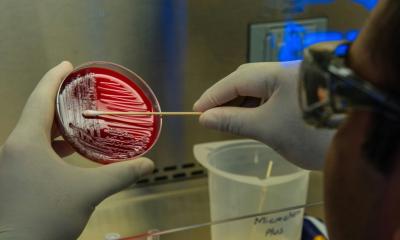Tissue-saving lung resection in malignant diseases
By Thomas Kiefer MD, Head of Thoracic Surgery, PTZ - Pneumological-Thoracic Surgery Centre, Ortenau Klinikum Offenburg-Gengenbach, Offenburg
During operative therapy for bronchial carcinoma the surgeon is always faced with two seemingly diametrical demands: Maximum radicalness whilst preserving as much healthy lung tissue as possible.
Up until the 1960s pneumonectomy was the procedure of choice for operative therapy of bronchial carcinoma. With increasing experience and access to scientifically gathered data there has been a move away from this type of therapy. Today, lobectomy is the standard surgical procedure. Whenever possible, pneumonectomy should be avoided. Some Thoracic surgeons even refer to pneumonectomy as a ‘disease’.
However, for a large group of patients removal of a pulmonary lobe is not possible due to their limited pulmonary reserves. To be able to offer these patients the option of receiving resectional treatment – and therefore a potential chance of a cure – parenchyma-saving resections have been developed. The basic prerequisite for an oncologically radical operation in bronchial carcinoma – apart from systematic lymphadenectomy – is the resection of an anatomical unit. Therefore, removal of the tumour alone is not an oncological operation.
So which arsenal is at the thoracic surgeon’s disposal to tackle the above-mentioned dilemma? On the one hand there are lobe resections, which prevent a pneumonectomy by, for example, anastomosing the Bronchus intermedius to the remaining primary bronchus or the tracheal bifurcation after removal of the right upper lobe with a bronchial sleeve. Thoracic surgeons talk about sleeve resections with these types of parenchyma-saving procedures.
In the case of segment resection, the situation would theoretically allow for removal of a lobe due to the location of the tumour, but because of the limited pulmonary reserves of the patient the procedure cannot be considered. Whereas there is now a broad consensus that oncological, long-term results achieved with sleeve resections are on a par with the standard procedure, there is no such agreement over segmental resection.
Both surgical procedures – sleeve resection as well as segmental resection – require a lot of surgical experience, precise anatomical knowledge and a perfectly well-rehearsed team, along with an infrastructure that allows not only for the successful implementation of such complex surgical interventions but also for the appropriate peri-operative management, which is just as important.
The resection of pulmonary metastases provides a different kind of challenge. In this case, achieving oncological radicalness does not entail the resection of anatomical units. The complete removal of a metastasis surrounded by a small seam of lung tissue suffices. However, lung metastases are not always ideally and typically situated near the lung surface and, unfortunately, lung metastases occur all too often in multiples; in some cases, such as in thyroid- or osteosarcoma metastases – there can be ten or more of them. However, in these cases the thoracic surgeon also has a procedure available that allows him to preserve healthy lung tissue: Laser resection. An Nd:YAG laser with a special long wave has been developed for this procedure which facilitates cutting the tumour precisely out of the surrounding lung tissue whilst at the same time achieving aerostasis and haemostasis. This means that there is no need for sutures and clamp, which would tighten the healthy lung tissue and therefore impair respiration.
30.10.2007






